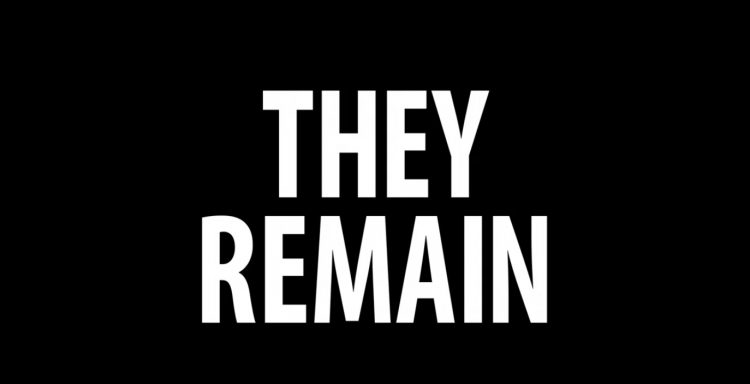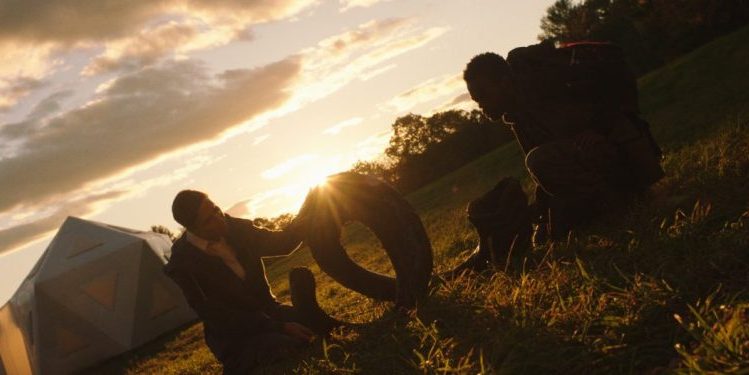Our world is full of cracks; its surface littered with dark crevices both shallow and deep. As much as we rush about trying to cover the landscape with pavement and spackle and paint, as much effort as we put into sanding and smoothing over the roughness of the world’s terrain, there’s no way to stop the shifting and cracking around us. Our dwellings are riddled with web-thin cracks in the paint, and our wilderness and oceans are fissured by cracks threading to the center of our planet. The urban backgrounds we erect are paper-thin facades; all the lights and neon just a weak flashlight shined into the void. And we all know it: behind our day-to-day worries and anxieties is the sureness that our reality is just a small cork bobbing on the surface of darkness and the unknown. Laird Barron’s writing resides in this space, or rather within the contrasting meridian between the spaces.
Barron has four collections of short stories, a few novellas, and a novel to his name. His writing straddles numerous genres, but he is best known for his work within the weird-lit subgenre dubbed Cosmic Horror, which explores the idea that behind our reality (or under, or alongside, or overlaid) is some sort of unknown force or presence. The idea plays on the lizard part of our brains that has never gotten over the fear of the dark and the assured knowledge of our own flimsy mortality.. The genre is most widely attributed to HP Lovecraft, so it’s no surprise that Philip Gelat’s They Remain, the first feature film based on Barron’s work, had its world premiere at Portland’s HP Lovecraft film festival. Through some wheedling and begging, I was granted a press pass for the weekend, and attended said premiere.

They Remain is based on Barron’s story “--30–,” featured in his second collection Occultation. The film hews very closely to the story; amazingly so. Both the story and film revolve around two scientists assigned to a large swath of land purchased by their employer that was once the site of a grisly Manson-family style cult and their assorted deviances. The land, made up of rolling empty fields, dense forests, and serene lakes, is now the site of bizarre and unexplained animal behavior. The scientists’ objective is to collect land samples and monitor/video any animal activity in the hopes of finding a biological explanation for the anomalies. The scientists (played in the film by William Jackson Harper and Rebecca Henderson) are stationed in a small, futuristic-looking multi-room pod set in the middle of an anonymous field. Their days are rote and monotonous, filled with the tedious tasks of traversing the acreage to refill and collect data cards from cameras and test soil samples. But as the days go on, the isolation and otherness of the surrounding wilderness (along with a series of bizarre finds and unexplained happenings) overwhelms them and the audience. The film is ultimately less concerned with storytelling than creating a sense of mood and unease. Aesthetically the film is beautiful landscape shot just-slightly-off-kilter so that what could be a rolling vista featured in a nature calendar is laden with mounting dread. The two leads are mesmerizing in their performances as well: as you watch, your trust in either’s perspective shifts and convulses along with the mutant heartbeat of the film, and you spend basically its entire running time waiting for and worried that something awful is about to happen. And then it does.
That said, the film will probably frustrate viewers who expect movies to fill in all the gaps for them. They Remain honors Barron’s style by never providing a blueprint or easy path to follow. It provides more questions than answers, but it earns the time you’ll spend considering it. The film is not a convoluted what is reality mindfuck designed to mask poor storytelling with style. Rather, it works as a natural-feeling exploration of those cracks in our reality. When things happen in the periphery of a shot, it isn’t a cheap jump-scare tactic, but an honest portrayal of the edges of darkness that our mind tries to shut out with reason. To be blunt, They Remain is brilliant and sticks with you long after the screen goes black.
Not only was I lucky enough to attend the film’s world premiere, but I was also incredibly fortunate to pose some questions to both Laird Barron and Philip Gelatt (who wrote the script as well as directed). Our conversation is below.

Credit: Sean Kirby
Cvlt Nation: How did this project come about originally?
Laird Barron: I received a call from my agents that Phil was interested in adapting my novella, –30–, into a film. I admired his work on Europa Report, so that inspired my confidence. Phil and I had a great conversation regarding his plans. We moved forward from there.
Philip, what made -30- stand out to you within Laird’s work as the project you wanted to adapt?
Philip Gelatt: The thing that first struck me about –30– was how enjoyably frustrated I was by it. I loved that it refused easy interpretation. I loved that it made me feel so uncomfortable. There was something about the weird ambiguity of it that just gripped me. For me THE line of the story was always “you have no idea what this is.” That just hit me like a punch. And I knew I wanted to get that line on screen and pull people into the unsettling world of this particular story.
Laird, this is the first film adaptation of your work — did you have any apprehensions going in? Did you figure it would happen at some point?
LB: There has been a significant amount of film-making interest in my work for a while now. It’s natural to wish for an adaptation. However, I’ve seen scripts and treatments that made my blood run cold.
Phil showed me an early draft of They Remain and that allayed any fears. He’s a gifted writer and he cleaved to the original story as much as possible.
One thing that works really well for this adaptation is that there’s no definitive supernatural beastie. Some of Laird’s stories feature arrays of hideous beings or gods which would’ve necessitated some effects to film. Whatever is going on in this story is nestled unsettlingly behind the scenes, so the film is spared having to put anything on screen that might come to look dated or would’ve soaked up budget.
Did that factor into choosing -30- over others? Or was that a useful coincidence?
PG: I’d say it was as much a happy coincidence as anything else. I am a big fan of what I guess I would call the “subtle-creep school” of filmmaking. Filmmakers like Kiyoshi Kurosawa, Roman Polanski or Val Lewton, to take it back even farther. And I knew I wanted to make a movie in that vein. So the off-screen aspect of the story spoke to me from the outset. But budget was also a consideration in that choice, most definitely. I try to be realistic about what kinds of films I’ll be able to get made. That being said… I’m dying to make a movie with an onscreen monster.
A motif of Laird’s early work is having a male protagonist who exhibits stereotypical Male Hero attributes, but is still powerless against the forces opposing him. Basically using the square-jawed manliness that usually equates to invincibility and exposes it for the flimsy nothing it is. The male protagonist of -30-/They Remain has to exhibit a range from confidence to total helplessness.
What was it like to cast this role?
PG: Casting was challenging. First off, there’s the nature of the material which is slippery and uncomfortable. And second off, I don’t particularly like to do auditions. So we sent actors the script, had them read it, and then brought people in and for lengthily conversations about the project. That then both give a sense of the person and also what they thought this film was going to be. Basically I wanted the script to act as part Rorschach test and part litmus test. What did the actors see in it? What might they bring to it without any input from me? I wanted to hear what my collaborators thought it was going to be very early in the process to make sure that we could mesh creatively.
As to the male lead himself, we were very lucky to get William Jackson Harper. He’s an enormous talent. So smart, so committed and just the best. I sadly don’t recall his exact initial take on the script but I do recall that he has a kind of sensitive uncertainty about it. He felt in that meeting raw and honest and willing to explore the role. That he would go from this film to Chidi on The Good Place really speaks to his enormous range.

Credit: Sean Kirby
Laird, [when writing the story] were you purposefully playing against that archetype to disarm your readers, or as a feminist commentary?
LB: –30– was written as part of a larger whole: the Occultation collection. The collection, in turn, was assembled to react to its predecessor and successor collections.
I revisit themes time and again. In this case, there are a several elements at work. I examined relationships, especially romantic relationships. Some of the great male heroes of mythology are more or less invincible until a woman, usually a loved one, lays them low–or at least sets the stage for the man’s destruction.
More important is the notion that in the face of betrayal, of nature, and the inexplicable, we’re all vulnerable. We’re merely playthings. Our physical strength, mental toughness, technological prowess, our discipline…None of it will save us.
Could it be said, then, that the mythos or “others” in your work is an analogy for, or physical manifestation of, nihilism?
LB: Sure. I’ve played with the idea in various stories that sapient life exists as a sensor of the greater universe; tools for data collection and recording.
However, my philosophy is more fatalistic than nihilistic. I believe that life holds meaning and is worth the struggle, even if the end result is a smash to black.
“Holds” meaning in a cosmic sense (as in: there is a greater meaning to us than our own interests) or holds enough meaning to our own lives and the lives we touch that it’s worth being our best selves?
LB: To us. In absence of an instruction manual, I feel that defaulting to action is superior to inertia.
The cosmos can worry about itself.
Philip, as Laird mentioned, this and many of his stories he’s close to his own philosophy. Do you share a similar view and look for projects that align with your own take on things, or are you most interested in projects from an objective artistic perspective?
PG: I have what I would call a shifting philosophy of life. If I had to codify it, I’d probably call myself a bleak existentialist . There may be no objective truth in the universe, no real meaning to anything… and yet true meaning is also where the individual finds it. It’s both and also neither. How that’s that for a frustrating answer? But I do completely agree that it’s on the individual to keep searching, to keep moving, to keep trying, despite how we all know things are going to end up.
For my personal work, I choose projects not necessarily because they align with my take on things but because they feel like they’re asking a difficult question or challenging my take on things. I don’t think I’d ever pick a project just for the sake of style or even just for the sake of genre. There has to be something going on under the surface. The film industry tends to reward the generic and the easily classifiable and, for my sins, I prefer to take on work that explicitly pushes against those things.
Certainly this film might frustrate some viewers who want things easily classified, but it doesn’t seem to me at all meandering or purposely vague or cagey. Your term “slippery” certainly applies to it (and much of Laird’s work). But it does seem that there actually IS a relatively straight-forward conclusion of “there is something very old in this spot that can push living things to a different state,” and I don’t think there needs to be more than that.
That said, it seems like the constant shifts of “is this a dream, is this really happening, what can we trust as the actual narrative” is going to be the biggest topic of debate. Do you two have your own blueprint or “know” what’s “real” and what’s dream, or is that definitive truth even possible or important?
PG: I think it’s important, for the film at least, for audiences to be actively engaged in that question as they watch. There is a moment, pretty early in the film, that I think is sort of the entry point to that dream or reality ambiguity, and from there forward (and hopefully long after the credits have run), my hope is that the audience will be left to make their own determinations.
LB: The original story originated from a nightmare, and I had several bad dreams while writing it. Eventually, I decided to frame the narrative as an ongoing nightmare. I’m uncertain that, ultimately, there’s a big difference between physical reality and the dream state.

Credit: Sean Kirby
How much involvement did Laird have with the project, if any? It’s remarkable how well the film captures the mood evoked in his writing.
PG: Once I had a draft of the script I was happy with I sent it over to Laird for him to read. I was very committed to doing an adaptation that was true to the spirit of the original and it was very important to me that he feel comfortable with the direction things were going. I don’t want to speak for him, but I think he was pretty happy with that draft of the script. Of course, once we entered pre-production, I ended up having to make various changes to that draft for one reason or another, but throughout all of that I kept my finger on the pulse of the original as best I could. Which I guess is my way of saying, while Laird was pretty hands off with the production, his original text remained important throughout.
The movie has such a distinct look; it would seem counter-intuitive that such a lush and beautiful landscape (especially in day time) would carry with it such a sense of dread, but every scene is weighted with a lurking menace while also being gorgeous. How did you achieve this?
PG: I am so happy with the look of the film. We were fortunate enough to get Sean Kirby to shoot the film. Kirby’s done a lot of documentary work (including the infamous Zoo) and a little bit of genre work (2007’s Cthulu). He’s a master of photographing landscapes as well as faces and this film is utterly reliant on both of those things.
A lot of our early creative discussions were about how we needed to evoke a sense of visual dread wherever we could, how even the beautiful things in the film needed to feel dreadful, unsettling, and possibly toxic.
We had this running short hand when discussing shot compositions in the film. “Leave room for the Other.” Which basically meant skew the shot a little, push it a little. Leave space where there should be no space.
Honestly, the colors of the film continue to startle me and I’ve been staring at them for awhile now. I knew I wanted green to feel somehow wrong in the film, and Kirby managed to really do that. He took what should have been a beautiful piece of land and destabilized it into a strange place where nothing you see can be trusted.
That sort of works as a microcosm for a lot of Laird’s work: the idea that one only needs to tread slightly off the beaten path to find the unknown and uncanny crevices in the world. I think a big reason why his work resonates is that we all intuitively understand that we know very little about our own world and that our barriers and walls are ultimately paper thin and useless.
PG: Yes! I completely agree. It’s an understanding as unsettling as it is undeniable. And he does such a good job of spinning it into stories that stick with you long after they’re done.
So now that They Remain has had its world premiere, what’s next?
PG: For now the best thing is to subscribe to the facebook page. That’s our hub for the time being. Once we have those dates and places locked in, we’ll be broadcasting them loudly and often.
Thank you both so much for your time!
PG: Thanks for the insightful questions!
LB: Thanks, Gus.
Follow the film on Facebook: https://www.facebook.com/theyremainfilm/?ref=br_rs
Laird Barron’s blog: https://lairdbarron.wordpress.com/



